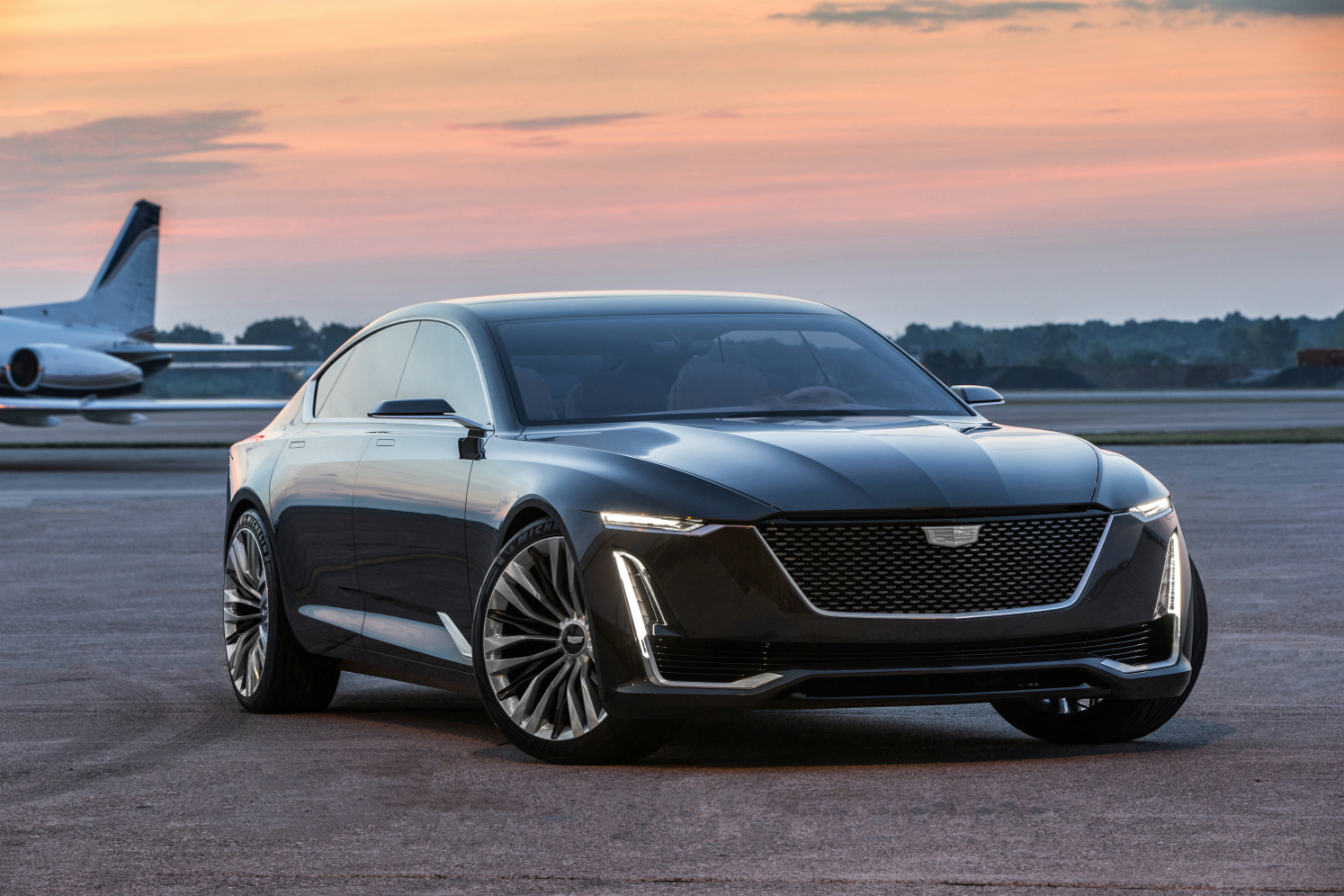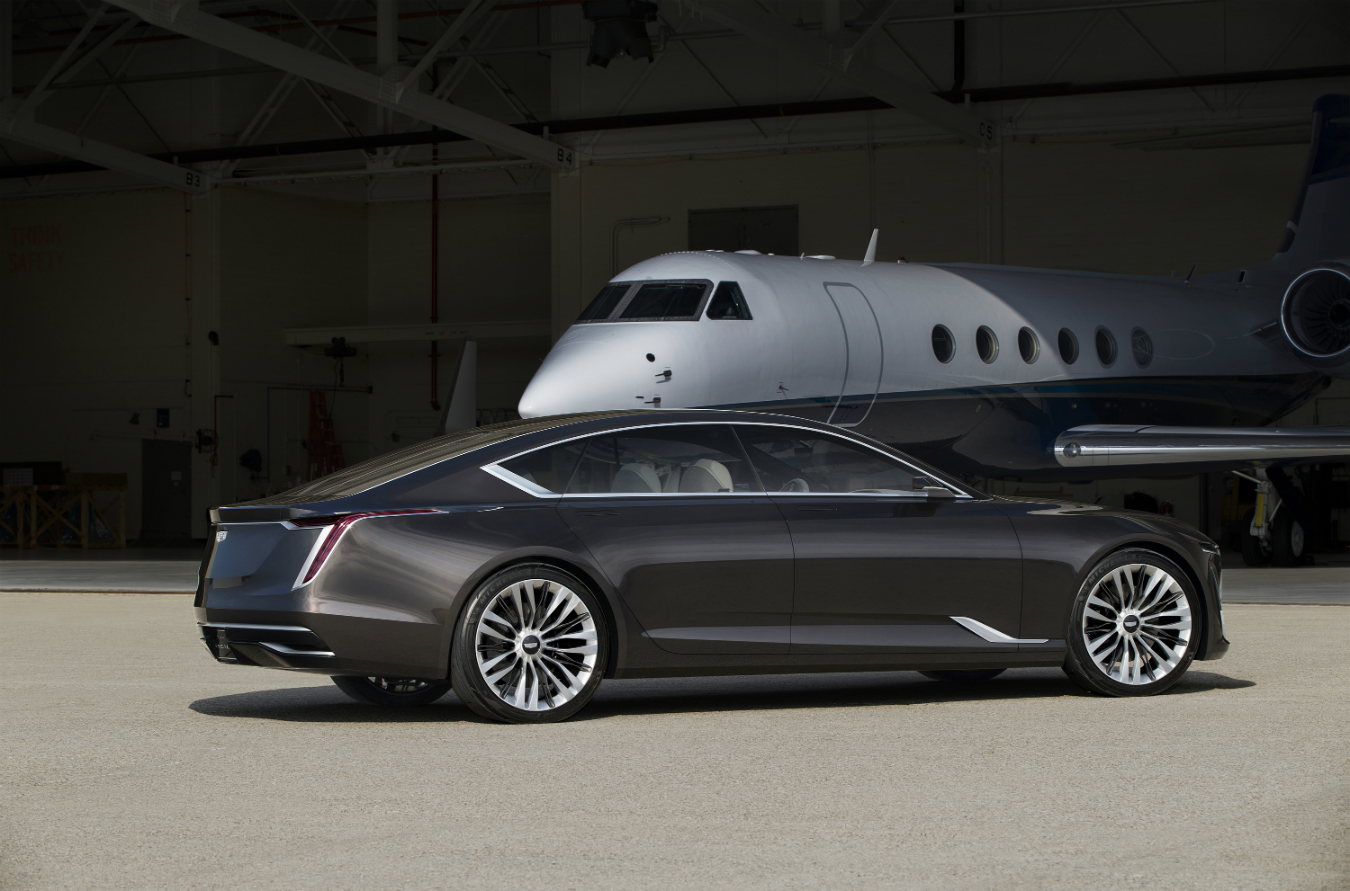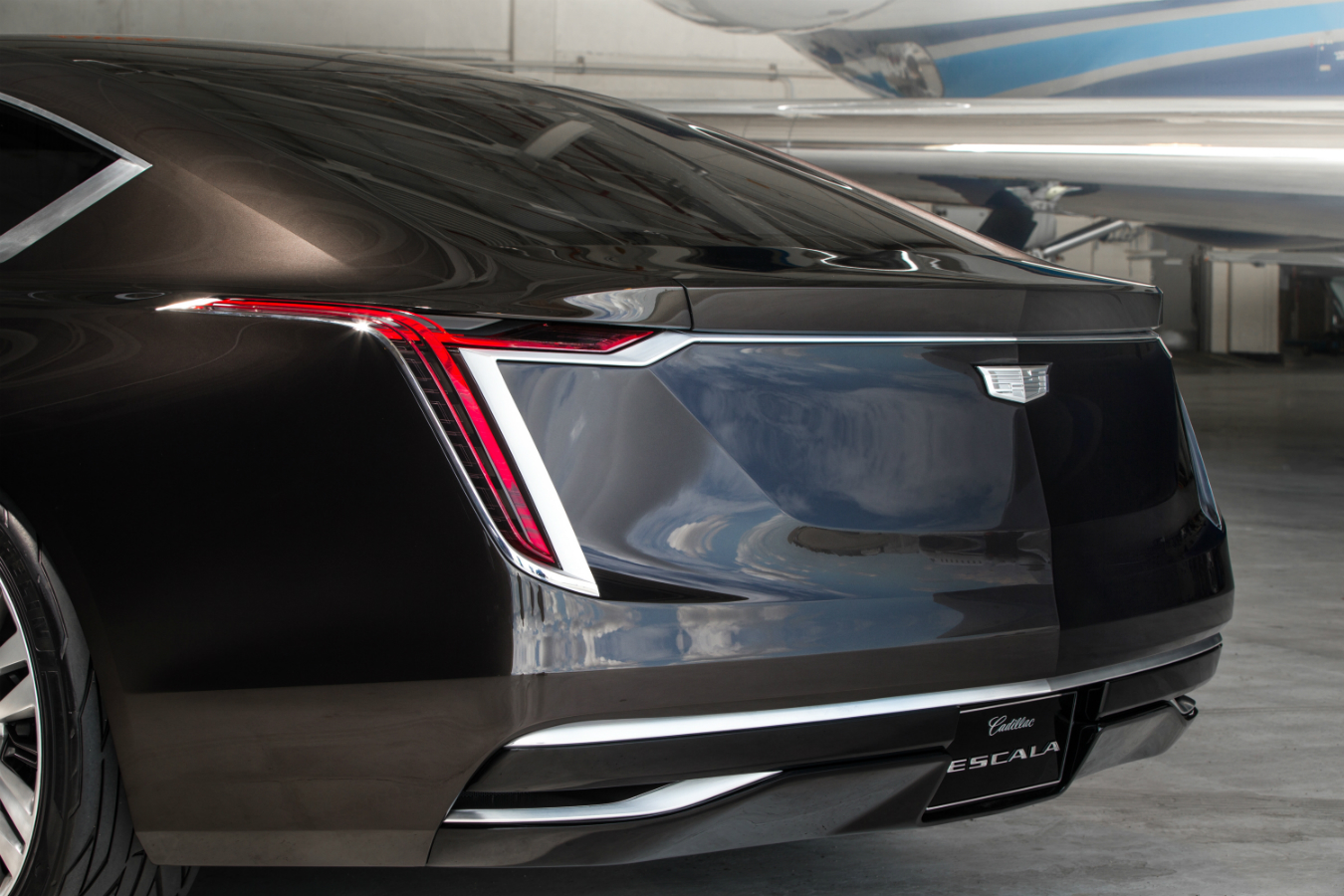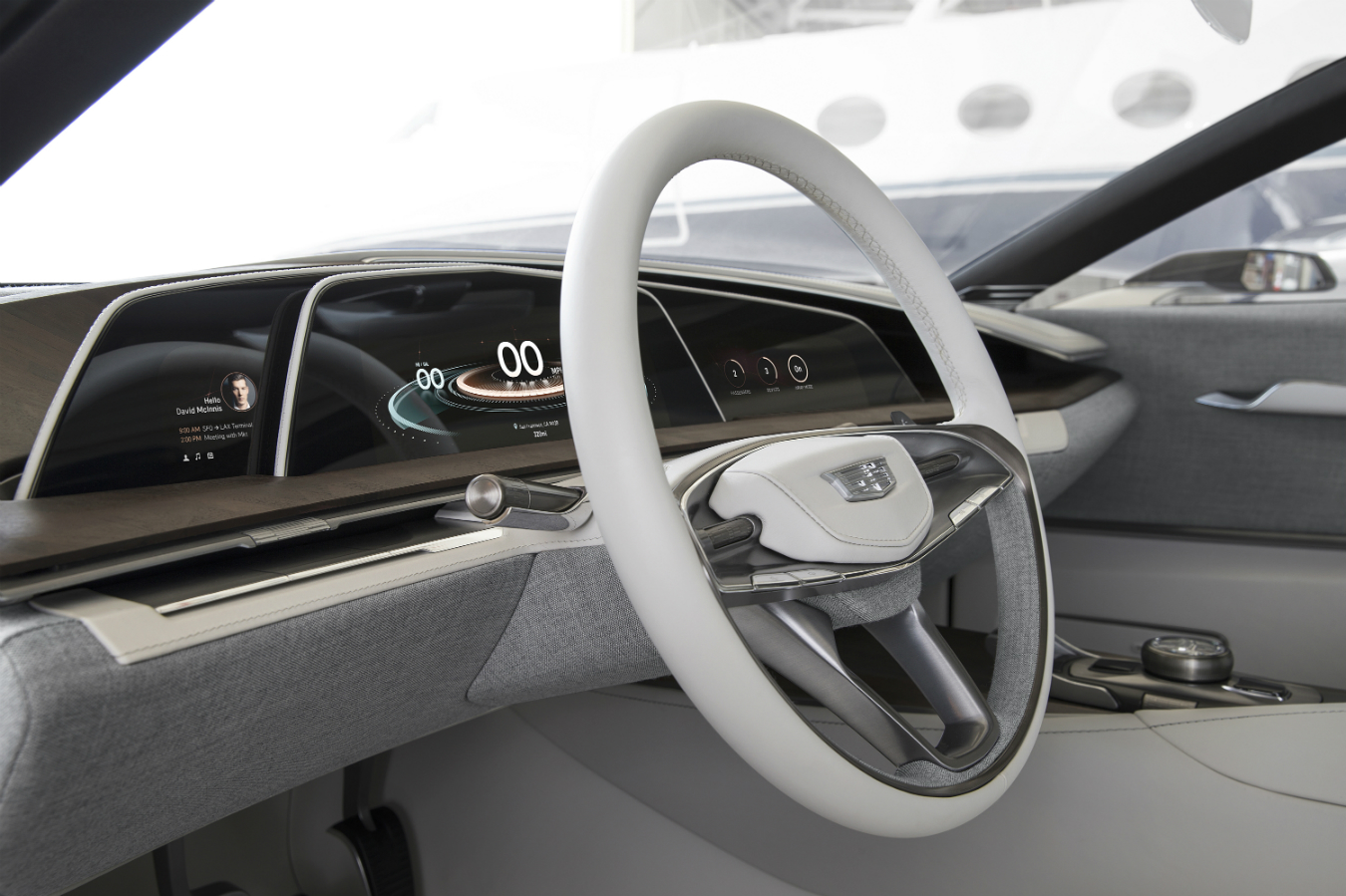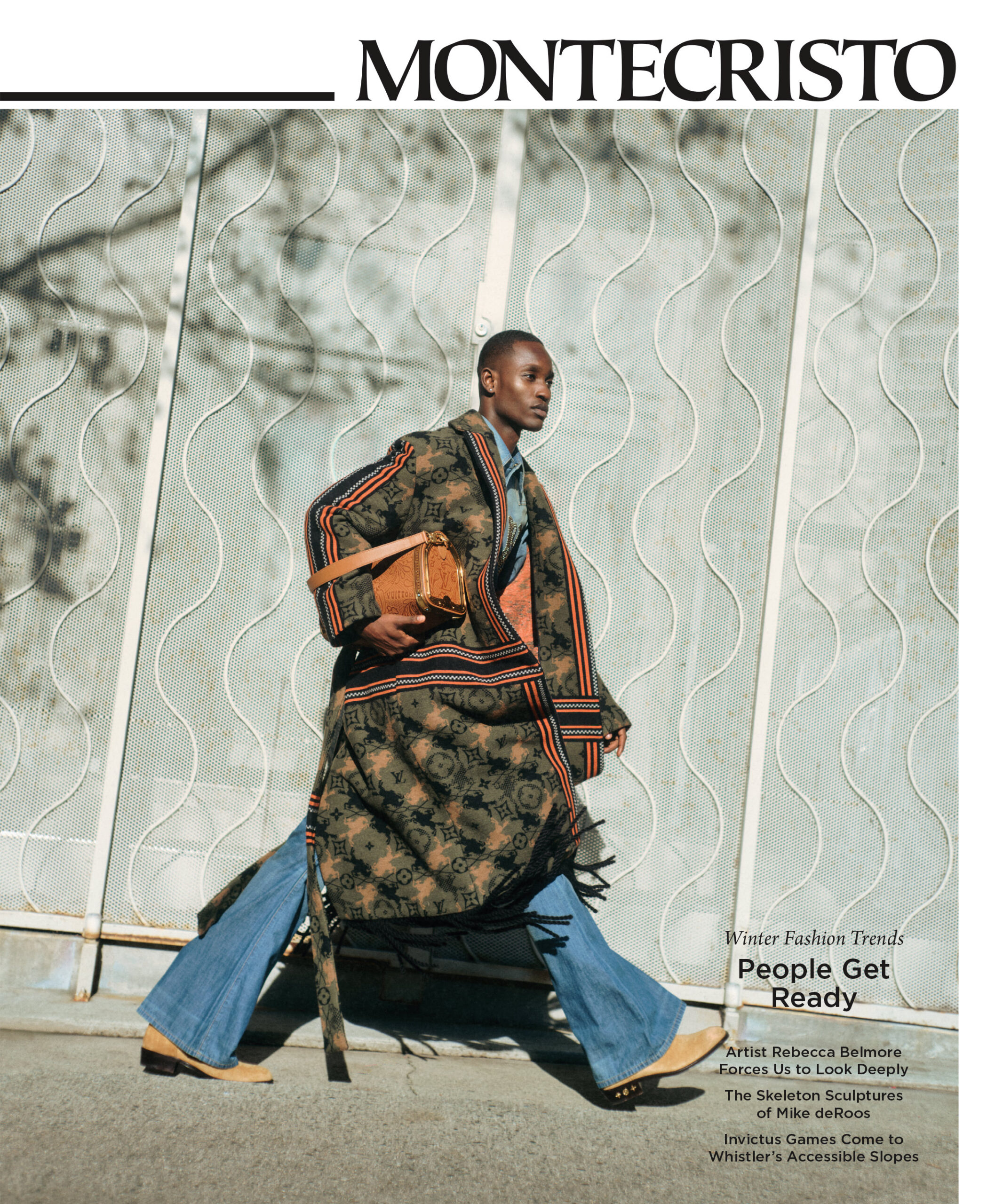To look at the Cadillac Escala concept car is to see the future of the Cadillac brand through the designers’ eyes.
This concept, a highlight of Cadillac’s exhibit at the 2017 Canadian International Autoshow at the Metro Toronto Convention Centre—opening on February 17 and running until the 26, though the vehicle is only on display until February 18—combines varying design elements into a single vision for a future flagship sedan.
As a vehicle, it presents a study into a relatively new area for the brand: a limousine-style saloon that is a joy to drive, but also a pleasure to be driven in. And to properly get there, the design team first needed to coalesce a Cadillac definition of American luxury—a task that hasn’t always been easy. “We did a study within Cadillac to understand what is American luxury. We found it very difficult to answer,” says Michelle Killen, Cadillac’s lead creative designer for colour and trim. “When you compare it to a lot of European competitors, it comes down to the details. We feel that we used a lot of details in the Escala.”
Those details start at the exterior and extend inward, with each playing a purposeful role. The initial sketches for the outside of the car began with three simple, clean, and fluid horizontal lines onto which key elements were added. The OLED headlamps, made with carbon-based materials, contribute to a walk-up look that Cadillac refers to as “sinister”. “Because of their positioning within the fascia, they’re set so deep, and they have this beautiful thin horizontal element that it just created this sense of sinister on the front end,” Killen says. Set between them, the grille is a departure from Cadillac’s traditional chrome-laden design and features a high-gloss black chevron repetition with depth added through bronze chrome top highlights.
The paint takes nine layers to produce: six of pigment and three clear coats. A black dye is added to the final coat to give it added depth and movement. “It creates a natural flow,” Killen says. “As the customer is walking around the vehicle, they don’t get hung up on anything. It is very clean and natural. It really does create this sense of arrival.”
Inside, the Escala explores the duality of drive-or-be-driven by seamlessly implementing two very different languages in the front and back rows—a story told through varying uses of high-quality materials. “In the front, you will find more technology and more leather,” explains Laetitia Lopez, creative designer in colour and trim for Cadillac. “Fabric is more present on the rear because we wanted to have the feeling of being at home.”
“When we selected the fabric, we wanted it to check two boxes: one to look like a premium men’s suit, and the other to remind people of a sofa,” Killen adds. “The fabric we use is actually from a furniture supplier, so it does have the durability that we would be looking for. It just happens that it has the wool look and fibers that you would also possibly find in a bespoke suit.”
The transition between the sportier front and comfort-oriented back seats is further emphasized through an accent band that runs across the entire side of the interior. In the front row, the band is a brushed metal; in the rear, it transitions to a satin-finish, open-pore American walnut akin to a table in a living room. “That door piece, when it transitions from the wood to the metal, it interlocks with each other and it’s a smooth transition,” Killen says. “It’s not abrupt. It’s almost as if the wood is the structure of the vehicle and it’s revealing itself under and through the leather. It creates a very clean, sophisticated interior.”
While there are elements of the Escala concept that are impractical for mass production, Killen explains that it presents ideas that will shape the Cadillac brand—and, more specifically, a flagship sedan—going forward. “From every concept, there are certain aspects that the customers really relate to or are drawn to, and then it’s our job to take that and try and create some of that feasibility in production,” says Killen. “The leather, the colours, the fabric—those are all elements that are currently in production. I think for us it’s just starting to execute those materials in an Escala way.”
Read more Transportation stories.
